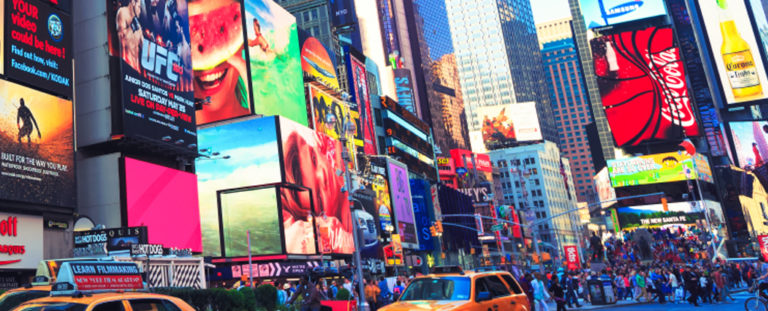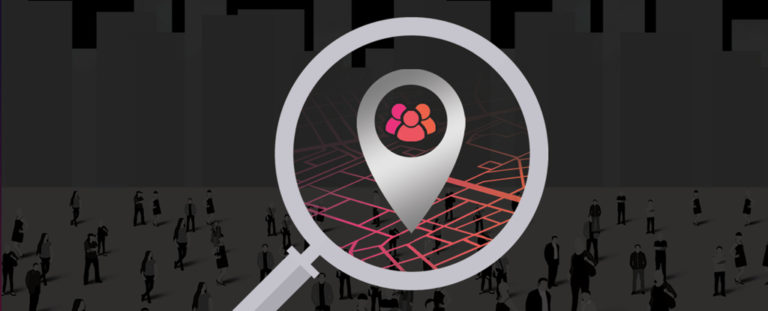Driving into the Future: Auto Industry Speeds Up with DOOH
Published: August 3, 2021
Start your engine because the automotive industry is vrooming back to life after the coronavirus pandemic. Experts suggest that mobility is on a path to becoming even more digital, and advertising for cars and others should be quick to follow.
The auto industry faced a downfall in sales when COVID swept the globe, leaving consumers stuck in their households and away from dealerships. After a 15% decline in auto sales -- the biggest dip since the Great Recession -- the auto industry is steadily reviving as vaccine rollouts across the country continue.
As the world revs back to life, the automotive sector can shift gears to redefine its business and cut costs through digital out-of-home (DOOH) advertising.
Did you know? The oldest form of advertising, out-of-home (OOH), has seen an 11% annual growth rate in the past 5 years, according to a recent KPMG report. Digital takes OOH advertising and powers it with AdTech technology to create automated images and videos, elevating conventional advertising to a whole new level. DOOH enables the automotive business to launch an accessible, flexible, and faster campaign to increase consumer awareness for your vehicles and dealerships and ultimately drive store visits and car sales. How? Programmatic technology enables you to target specific audiences as well as geo-target competitors’ locations for maximum exposure. Tools like day-parting and budget allocation ensure that your message is seen at the right time of day, on the optimal screens, by the right people. Access to attribution reports gives you the ability to measure the lift dealership visits or website visits and on-site conversions. Programmatic DOOH leaves open a window for creativity in crafting brand visibility and never-ending traffic. According to Insider Intelligence, DOOH is becoming one of the fastest-growing forms of advertising, increasing by 19.2% from $2.72 billion in 2020 to $3.84 billion in 2023.
An early adopter of the digital out-of-home movement was Mazda. The Japanese automaker saw a trend of online car shopping and wanted to increase foot traffic in its Canadian dealerships with a digital out-of-home campaign. Mazda created five custom audiences for its ads based on lifestyle, geo-location, household income, consensus data, and mobile IDs. The programmatic digital out-of-home campaign drove actual, traceable results. Mazda saw a 7% increase in ad recall, a 24% uptick in brand perception, and a 3% lift in brand behavior.
Not only can digital ads in the physical world generate brand awareness, but they can be personalized to the environment or cultural phenomenons of a city or a specific location. For example, Toyota launched a nationwide campaign to promote and spread awareness of hybrid cars in Turkey, a market not widely adopted. The multinational automotive manufacturer ran over 300 digital billboards, optimizing external factors such as traffic patterns, noise levels, gas consumption, and the currency rate into their digital ads. This novel approach propagated a 44% year-over-year increase in hybrid motor sales in Turkey, making it the highest-selling car in the country. With quantified results, Toyota contextualized targeting with key locations where their audiences would most likely be and at what given time and verified the campaign’s positive impact with attribution data. This campaign proves that digital out-of-home sparks originality.
Automotive brands are continuously looking at ways to scale their audience while increasing revenue. Digital out-of-home advertising can accomplish both of these goals with its transient and omnipresent nature. And, with the ever-changing capabilities of technology, digital advertisements can be reduced to a smaller scale, making them available in crowded places such as airports, malls, subways, and restaurants. Ford utilized DOOH to promote its new car model, Ecosport SUV, displaying dynamic ads in the Paris-Orly airport. Airport go-ers interacted with the ads to view the 360-degree virtual tour of the interior, array of color options, and videos of the car in action.
The automotive industry revolves around a fast-changing environment. Brands are working hard to gain consumer trust and attention in a world dominated by cyclical trends and short attention spans. Through DOOH, brands have the opportunity to captivate attention, control their messaging, and measure performance without spending the added costs. As the world reopens and people spend more time out of their homes, potential drivers are scanning the city streets for their next ride.
Written By: Julia Cramer
To get the latest updates on out of home advertising, digital marketing and technology, follow us on:
Or sign up for our newsletter.






